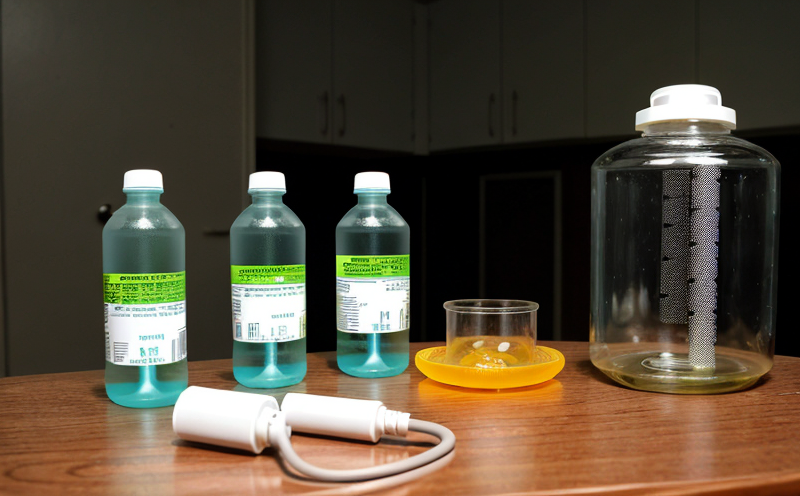EPA 904 Radium 228 Test in Water
The EPA Method 904, also known as the Radium 228 test in water, is a critical analytical procedure for detecting radium isotopes—specifically 226Ra and 228Ra—in drinking water supplies. This method is essential for compliance with the U.S. Environmental Protection Agency's (EPA) regulations on radioactive contaminants in public drinking water systems.
The test addresses radium isotopes because they are known to pose health risks, particularly through ingestion. Radium decays by emitting alpha particles, which can potentially cause cancer if present at high levels in water supplies. The EPA's Maximum Contaminant Level (MCL) for combined 226Ra and 228Ra is set at 5 picocuries per liter (pCi/L), with a secondary MCL goal of 3 pCi/L to protect public health.
The EPA Method 904 involves several key steps, including sample collection, preparation, and analysis using a gamma spectrometry system. This method is designed to provide accurate, reliable results that can be used for regulatory compliance purposes. The test aims to ensure that drinking water meets the established MCLs for radium isotopes.
The analytical procedure includes several critical steps:
- Sample Collection: Samples are collected from a representative location within the distribution system using appropriate containers. These containers must be free of any contamination that could affect the results.
- Sample Preparation: Once collected, samples undergo thorough preparation to ensure they are suitable for analysis. This includes filtration and digestion steps to extract radium isotopes.
- Analysis: The prepared sample is analyzed using gamma spectrometry, which detects the characteristic energy emissions from 226Ra and 228Ra isotopes. This process identifies the presence of these isotopes in the water.
- Data Interpretation: The collected data is interpreted to determine if the sample meets the regulatory standards set by the EPA.
The accuracy and precision of the analysis are critical, given that even small deviations from compliance could have significant public health implications. Therefore, it is essential to use high-quality instrumentation and experienced personnel for this testing.
The results of the EPA 904 test play a crucial role in ensuring water quality and protecting public health. Compliance with these regulations can help prevent potential health risks associated with radium exposure.
Applied Standards
| Standard | Description |
|---|---|
| EPA Method 904 | This method provides detailed procedures for the detection of radium isotopes in water samples, including sampling protocols, sample preparation methods, and analytical techniques. |
| ISO 17025 | The laboratory adheres to ISO/IEC 17025 standards ensuring that all testing processes are conducted under controlled conditions with high-quality assurance measures. |
| ASTM D3689 | This standard provides a method for the determination of radium in drinking water using a gamma spectrometry system, which is an essential reference for EPA Method 904. |
The compliance with these standards ensures that testing results are accurate and reliable, meeting both regulatory requirements and international quality assurance benchmarks.
Environmental and Sustainability Contributions
The EPA 904 Radium 228 test in water plays a vital role in environmental protection, ensuring that public drinking water supplies meet stringent safety standards. By detecting radium isotopes at levels below the MCLs, this testing helps prevent potential health risks associated with long-term exposure to these radioactive contaminants.
The results of this test contribute to sustainable water management practices by identifying and addressing potential issues early on. This proactive approach ensures that public health is protected while also promoting environmental stewardship.
By adhering to EPA regulations, the testing service helps municipalities and water treatment facilities maintain compliance with federal standards. This not only protects public health but also supports the overall sustainability of water resources by ensuring that they are used efficiently and responsibly.
Competitive Advantage and Market Impact
The ability to accurately and reliably detect radium isotopes in water is a key differentiator for laboratories offering EPA 904 testing. This service provides quality managers, compliance officers, R&D engineers, and procurement teams with the assurance they need to ensure regulatory compliance.
Water utilities and treatment facilities that use this testing service can demonstrate their commitment to public health and environmental sustainability. By providing accurate results, these laboratories help water providers stay ahead of regulatory changes and maintain a competitive edge in an increasingly regulated industry.
The expertise and precision offered by this testing method also contribute to the overall reputation of the laboratory. This enhances its standing in the market as a trusted provider of high-quality analytical services, which is crucial for maintaining long-term relationships with clients.





